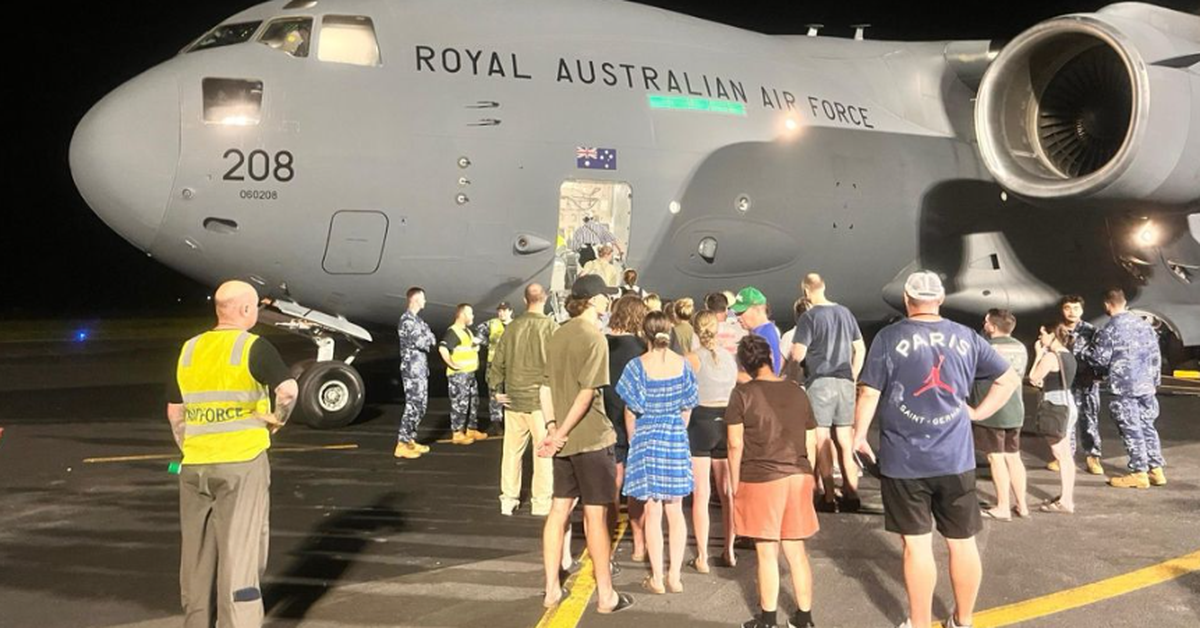National Archives digitisation project puts a face to women’s World War II service

- by Admin
- November 17, 2024
The National Archive of Australia has digitised over a million service records from World War II, many of which haven’t been seen for 80 years.
The project has given a new perspective on women’s service during the conflict.
Loading…
“It was very dark brown, with ginger.”
Aged 104, Merle Hare is looking at her war record for the first time.
She passes over her photograph, noting her hair, before pouring over a copy of the yellowing records document.
Hair: dark brown
Eyes: hazel
Complexion: olive
Height: four feet and ten inches
An S, in pen, written in front of the word He.
Loading…
The ordinary details prompt fond memories of wartime Melbourne.
“Because I was very little, when I was on the dance floor I was tossed up in the air by the American [soldiers],” Mrs Hare said.
“They’d pick me up and spin me round and throw me up in the air and catch me. It was quite fun.”
Mrs Hare joined the Women’s Royal Australian Naval Service (WRANS) in 1943.
She worked as a writer, or clerk, at HMAS Cerberus — the naval college where new recruits were trained.
“There were only about 20 of us [recruited], each had to have their uniform tailor-made,” Mrs Hare said.
“We were very exclusive when we first went in.
“They had no women in the navy, so they had no uniforms.”
Merle and her sister Alva, an army nurse, were two of more than 60,000 women who served during World War II.
As many as 50,000 of these women had their picture taken when they signed up.
Candid, arresting and often full of personality, these images capture the precise moment when a woman’s life changed forever.
For some it would have been the first time they’d ever had their photograph taken.
For some it would be their last.
A huge numbers task to recognise individual stories
Loading…
The National Archives of Australia has been painstakingly digitising over a million World War II service records of men and women.
Stacked end on end, the paper files would stretch for 5.5 kilometres.
Loading…
Previously, people had to request the digitisation of a record or visit the archives in Canberra to view the original.
Now, the records are searchable and able to be viewed online for free, thanks to funding from the federal government.
The project cost $10 million and took five years to complete, but the end result is an invaluable resource for the last few living veterans, their families, and for generations to come.
Rebecca Penna, director of digitisation services at the National Archives of Australia, said digitising the records was a dauntingly large job to take on.
“We had this huge numbers task against us,” Ms Penna said.
“But then we realised that it’s actually not a numbers game at all; they’re individual people, they’re individual files, they’re individual stories.”
Though thousands of pictures of men and women were taken when they enlisted, many remained undeveloped for 80 years.
In-house staff and subcontractors have been using commercial scanners to digitise each document one by one.
Travis Taylor, assistant director of preservation at the National Archives, said they’re in a race against time.
“The degradation isn’t a straight line, it reaches a sort of a tipping point, and then it almost falls off a cliff,” Mr Taylor said.
“Eventually they’ll fall apart into a powder [leaving] no image whatsoever.”
Laid out on a large workbench in the conservation department, are some of the original photos and files held in the repository.
Careful work is done on these degraded images in a darkened photographic studio at the archives.
“We’re not miracle workers and there’s no magic wand, once they’re gone, they’re gone,” Mr Taylor said.
“But if the image is very cockled, if the image is just faded, we can work with the computer systems that we have to try to draw that image out a little bit more.”
Thankfully the importance of the images was recognised by Barbara Mason, an Australian philanthropist who donated $1 million to the archives to fund the restoration of the negatives.
“For some family members, this may be the last photo of their great great uncle, their great great aunt, before they went off to war and possibly never came back,” Mr Taylor said.
“It is a really great opportunity to give back to the broader Australian community, these images of people who have served the nation.”
Australian life changed by war
Prior to the outbreak of war, women were only allowed to serve in the armed forces as nurses.
But from 1941, women could enrol in the Women’s Auxiliary Australian Air Force (WAAAF), Australian Women’s Army Service (AWAS), or Women’s Royal Australian Naval Service (WRANS).
Thousands also served in the Australian Women’s Land Army (AWLA) which was formed to address the shortage of rural labour.
Emily Hyles, a curator at the Australian War Memorial, said life for women in Australia changed forever as a result of the war.
“I imagine that initially there was probably some resistance to women entering into all these new roles by more traditional men,” she said.
“About 60 per cent of working age women undertook war work.
“Whether it was paid or unpaid, they did a variety of things — albeit at half the pay that the men enjoyed.
“But they’d had a taste of what it meant to have independence, financial freedom, and undertake roles that were really not traditionally associated with women.”
Loading…
Those ‘traditional men’ might get on the bus or tram to discover a woman was driving.
But women also built aircraft and boats, worked in munitions factories, staffed coastal gun emplacements and decoded ciphers.
“It was quickly discovered that given the right training, women proved that they were capable of doing anything,” Ms Hyles said.
Having been unable to join the service before the war, hundreds of women went on to be commissioned as officers in the AWAS, WAAAF and WRANS.
It was immensely satisfying for women like Mrs Hare.
She was very capable at her clerical work, balancing the books and ordering supplies for the 2,000 trainees and staff at HMAS Cerberus.
“I always loved numbers,” Mrs Hare said — and that was just as well, because she ended up taking on the work of her boss who had been sent home from combat after being on a ship sunk in war in the Pacific.
“He was a wreck,” she said.
“So I did his job for him for about two years which I didn’t mind at all, I was doing it anyhow.”
Mrs Hare served in the Women’s Royal Australian Naval Service until being demobbed in 1946, at the end of the war.
She remembers being on leave in Sydney when she and her husband Bob, who she married during the war, heard the war had ended.
“We were in Martin Place when it was announced, everyone went nuts I’ll tell you,” Mrs Hare said.
“It was just a tremendous feeling.”
Loading…
A tremendous feeling, which is now captured all the more richly thanks to the archives.
“That’s the big thing with the archives, we hold unique records,” Ms Penna said.
“These are one of a kind, and so staff take that really, really seriously. These are really precious records.
“These women were doing incredible things. There’s a lot more than just knitting socks.”
Credits
Reporter: James Vyver
Producer: Charlotte Gore
Graphics: Phil Jaiyawong
Editor: Niki Burnside
Photography: James Vyver, Michael Barnett and David Sciasci with archive material supplied by the National Archives of Australia, the Australian War Memorial, and the National Film and Sound Archive of Australia
Videography: Michael Barnett
The Latest News
-
December 23, 2024TaylorMade drops Hall-of-Fame Christmas posters starring Tiger Woods, Rory McIlroy and Nelly Korda – Australian Golf Digest
-
December 23, 2024Here’s why Golf Twitter lost its damn mind over Team Langer’s PNC victory – Australian Golf Digest
-
December 23, 2024Social Media Ban in Australia: What Online Casinos Can Learn on Responsible Gambling Practices? – Insights from CasinoAus
-
December 23, 2024From smaller homes to screen time, backyard cricket is facing challenges in modern Australia
-
December 23, 2024This quiet Canadian will make you love YouTube golf again – Australian Golf Digest




